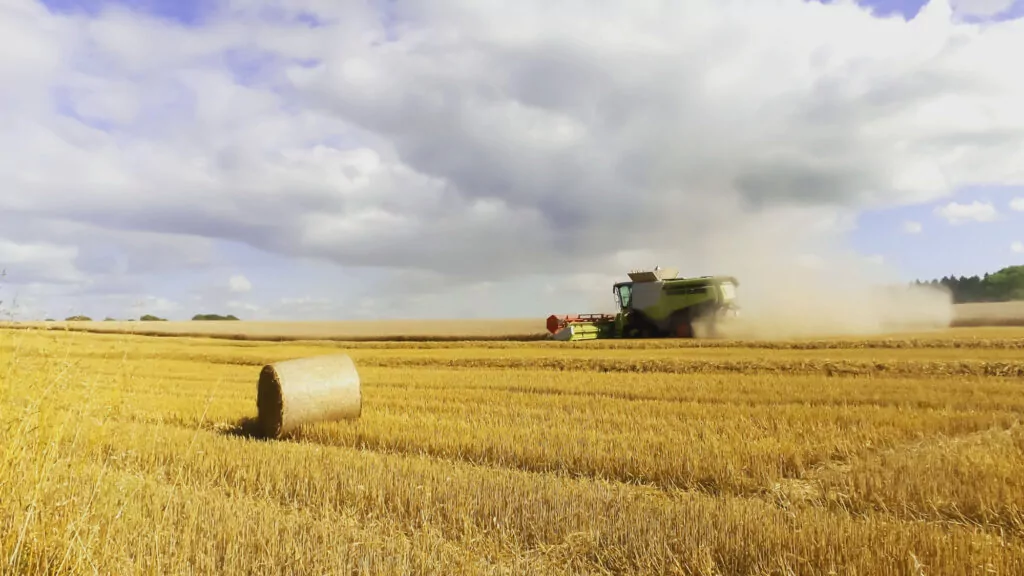
Accommodation and farm workers – what do you need to know?

By Danielle Spalding, Laura Prouse
29 Apr 2025 | 5 minute read
Agricultural workers are vital to the farming industry, and it is common practice for many employers to provide them with accommodation, either on or off the farm, as part of their employment. These arrangements can be beneficial for both parties, offering workers a stable place to live and employers the convenience of having workers close to the job. However, while it seems straightforward, these living arrangements come with legal protections that both employers and workers need to understand. Unfortunately, it's not always as simple as just handing over the keys.
Farmworkers who are provided with accommodation by their employer, may acquire certain legal protections. These include security of tenure, which means that the worker can't be easily evicted and succession rights, which could allow a family member to take over the accommodation even after the worker's employment has ended. While these protections offer important security for workers, they can also present challenges for employers.
It is essential for both agricultural employers and workers to understand how these rights work and ensure that occupational arrangements are carefully considered, clearly agreed and properly documented in writing as proper documentation and a thorough understanding of agricultural occupancy rights can prevent costly and time-consuming disputes.
In this article, we will break down the key features of agricultural occupancy rights and explain why legal advice is strongly recommended to both parties to help avoid future disputes or unintended consequences.
What type of agricultural occupancy is in place?
The type of agricultural occupancy a worker holds depends on when the arrangement started. The key date here is the 15 January 1989.
- Before 15 January 1989: If the arrangement started before this date, the agricultural worker is likely to have a "protected agricultural occupancy" which is governed by the Rent (Agriculture) Act 1976.
- On or after 15 January 1989: If the arrangement started on or after this date, the worker would likely have an "assured agricultural occupancy" under the Housing Act 1988.
Understanding which type of occupancy applies is vital, as it impacts the worker's legal rights and the employer's obligations, especially when it comes to ending the tenancy.
What does it take to qualify?
For a worker to qualify as an agricultural occupier and obtain agricultural occupancy rights, they need to meet several conditions. It's important for both employers and workers to be aware of these criteria:
- Work History in Agriculture: The worker must have worked in agriculture (either full time or as a permit worker) for at least 91 weeks out of the preceding 104 weeks. This work doesn’t necessarily have to be with the same employer, it can be across different farms, as long as the worker has the relevant period. For employers, this means that even if a worker changes farms, their right to occupy accommodation could still apply.
- Qualifying Ownership: The employer must be the worker's immediate landlord and have arranged for the worker's accommodation (but they don’t need to own the property). A worker can’t claim agricultural occupancy protection if the landlord is a public body, such as a local authority or a national park.
- Relevant Tenancy or License: The worker must have an agreement that grants them exclusive occupation of the property/accommodation. There are set requirements. For example, agricultural holding act tenancies, farm business tenancies, assured shorthold tenancies and service occupancies are not relevant tenancies or licences. In addition, if the employer provides services like meals, cleaning or laundry as part of the agreement, this could impact on whether the tenancy is eligible for agricultural occupancy rights.
Ending the Agricultural Occupancy
When it comes to ending an agricultural occupancy, both the worker and the employer have certain rights and responsibilities. However, terminating an agricultural occupancy is not always a simple process:
- By the worker: A worker can bring both a protected and assured agricultural occupancy to an end by serving a notice to quit or by leaving the property with no intention of returning. Importantly, just giving notice to end their employment does not automatically end the occupancy.
- By the employer: It's more complicated for an employer. A tenancy can only be ended by applying to court and proving one of a number of specified grounds. These grounds can be either discretionary (where the court decides if it is reasonable to grant possession) or mandatory (where the court must grant possession if certain conditions are met). Grounds for ending the tenancy include things like unpaid rent, the accommodation being required for the employer or their family, or a breach of the tenancy agreement.
What about succession rights?
One important feature of agricultural occupancy rights is succession rights. If a worker with an agricultural tenancy passes away, their spouse, civil partner, or sometimes even another family member might be able to "succeed" to the tenancy, meaning they can take over the accommodation. However, this can only usually happen once – usually, there is only one succession allowed.
This means the tenancy can’t be passed down forever, but it does give some peace of mind to those who might rely on the accommodation. For employers, this could mean that even after a worker's death, their family might continue to live in the accommodation, which could have implications for the future management of the farm.
How do I avoid new tenancies becoming assured agricultural occupancies?
If you're offering accommodation to a farmworker and you want to avoid the tenancy becoming an assured agricultural occupancy, it's vital to take specific actions at the beginning of the tenancy. The solution may be as simple as: serving a prescribed notice to the worker before any agreement starts, clearly stating that the tenancy will be an assured shorthold tenancy. However, if the worker already has agricultural occupancy rights, simply entering into a different agreement and/or moving them to a different property will not necessarily remove their protections. So, you can’t just transfer them to another property to avoid these rights. If you’re unsure about how to proceed in these situations, it’s always best to get legal advice.
The key thing is there are ways to avoid unexpected protection applying and legal advice should be sought.
Need help?
Managing agricultural occupancy arrangements can be tricky, especially with the variety of rights and protections in place for workers. If you're unsure about the terms of your agreements or how to handle specific situations, it’s always a good idea to seek professional legal advice.
Our agricultural lawyers is here to help both employers and workers understand their rights and responsibilities. We can guide you through the process of setting up new agreements, reviewing existing arrangements, and minimising potential risks. Additionally, we can provide advice on upcoming changes to residential tenancy laws, such as the Renter's Rights Bill, which could impact agricultural tenancy agreements. If you have questions or need assistance, don’t hesitate to get in touch!
For more information on this, see our recent article: Updated: Renters' rights revamp – key points for landed estates | Foot Anstey.



















